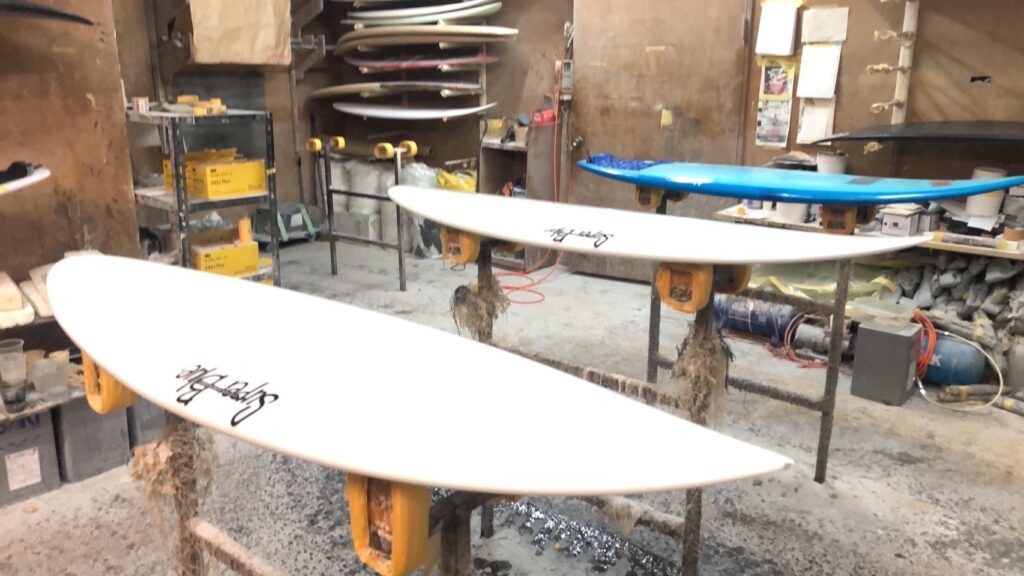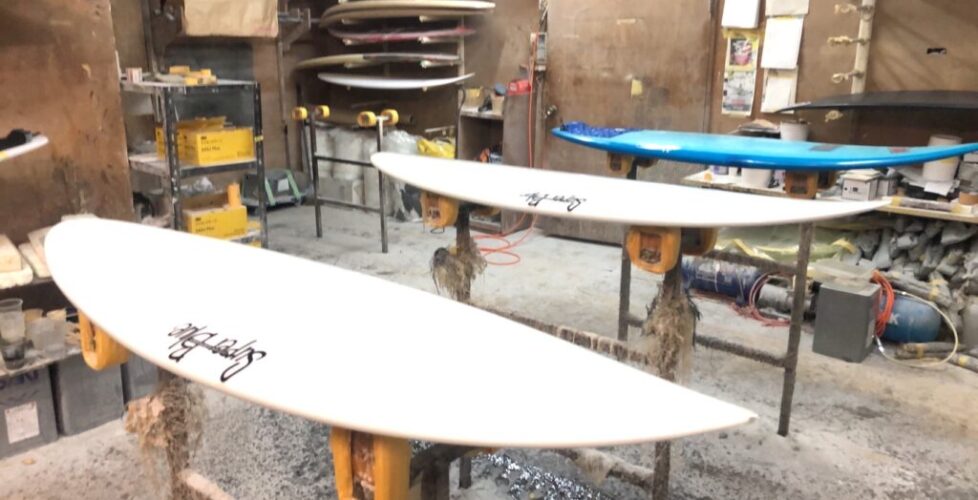custom surfboards
Surfing is more than just a sport. It’s a lifestyle, an art form. And your surfboard can be part of that expression. Commercially available surfboards are great, but having your own board makes surfing a much more personal and special experience. A custom surfboard reflects your body type, surfing style, and even personality, making it the best option for enjoying your own waves.
Think of your own design
Creating a custom surfboard is the process of projecting your unique identity onto the waves. The process begins by choosing the shape, size, color, and design pattern of your board based on your preferences, body type, and surfing style. First, think about what kind of waves you want to face and how you want to face them. For example, you might need a sharper nose to handle faster waves, or a longer, more stable board to enjoy bigger waves.
Design inspiration can come from nature, art, and even personal experience. For those who value visuals, you can decorate your board with a specific theme or pattern, which will not only enhance your surfing performance but also your presence on the beach. In addition, our craftsmen create each board by hand using a variety of materials and techniques to transform your vision into reality.
Selection of length, shape and material
When designing a custom surfboard, the length, shape, and materials used have a direct impact on surfing performance. Each element needs to be adjusted depending on your surfing style, the type of waves you ride, and your weight and build.
length
The length of a surfboard greatly affects the balance between stability and maneuverability. Longer boards are better for beginners and are easier to catch waves and are more stable, while shorter boards offer more maneuverability and speed. It is important to choose the appropriate length depending on your surfing skills and preferences.
shape
The shape of your surfboard has a huge impact on how well it interacts with the waves. For example, if you want long, smooth rides on point breaks, a longboard with a rounded nose is a good choice. On the other hand, for active surfing on short breaks, a shortboard with a pointed nose is best.
material
Polyurethane (PU) and epoxy resin are commonly used. PU is traditional, flexible and has a good feel against waves, while epoxy is lighter and more durable. Recently, environmentally friendly materials have also been added to the selection, and are sometimes chosen by surfers who are interested in sustainable surfing.
Manufacturing process: by the hands of craftsmen
Manufacturing custom surfboards is more than just a process; each board is a work of art, with the passion and skill of craftsmen poured into each board. This process consists of the following steps:
shaping
The first step is shaping. Craftsmen start with a large block of Styrofoam and carve it into a shape that fits your body type and surfing style. This process determines the curves and contours of the board, which greatly influences the board’s movement and responsiveness.
glassing
Once the shaping is complete, we move on to the glassing process. At this stage the board is coated with fiberglass cloth and resin to add strength and water resistance. The thickness and type of glass will affect the weight and flexibility of your surfboard, which is directly related to ride comfort.
sanding
After the glassing has hardened, the surface of the board is sanded to a smooth finish. This process is important not only for aesthetics but also for minimizing water resistance.
finish
Finally, decals and coloring are applied and a final coating is applied to make it waterproof. Custom design elements are added here, making the board a completely one-of-a-kind piece of art.


First experience at sea
Taking to the water for the first time on a custom surfboard designed and crafted by craftsmen will be an unforgettable experience. In this section, we will share the excitement and surfing sensations of that special day.
Expectations before entering the sea
You were probably excited when you got your custom board. You must have been looking forward to that moment to see how your new board would catch the waves and how smoothly you could ride them.
The moment you first caught a wave
Words cannot describe the feeling you get when you enter the water and catch your first wave. The custom board responds sensitively to your movements, delivering speed and maneuverability beyond your expectations. Your board, which you designed just for you, will feel like a part of you.
Surfing feel and experience
Depending on the characteristics of your board, your surfing style will also change. Custom boards are made specifically with your body type and surfing technique in mind, so you’ll see an improvement in your performance. The sense of unity with the waves, low water resistance, and stable ride feel provide a sense of satisfaction that cannot be obtained with commercially available boards.
at the end of the day
As the sun sets over the ocean, you finish your first day on your new custom board. At the end of the day, a new bond is formed with the board, and it’s a moment that makes you look forward to surfing even more.
Custom surfboard maintenance and care
Custom surfboards are not just sports equipment, they are your surfing partner. Therefore, proper maintenance is essential to maintain its performance and use it for a long time.
always keep clean
After surfing, your board may have salt, sand, and algae on it. If left untreated, these may damage the surface of the board or cause deterioration of the material. After every surfing, it is important to carefully wash your board with fresh water and let it air dry.
protect from sunlight
Surfboards are very sensitive to UV rays, so you should avoid leaving them in direct sunlight for long periods of time. UV damage can not only fade board decals and paint, but can also weaken the board’s structure. When not in use, we recommend storing it in a cool place with shade or using a UV protective cover.
Regular checks
It’s important to repair small cracks and dings before they cause major damage. In particular, check carefully for areas where water can easily enter the interior, and if necessary, contact a professional repair company.
Proper storage method
Ideally, surfboards should be stored horizontally if possible. When storing the board vertically, be careful not to bend the board and provide support to distribute the board’s weight evenly.
By following these care points, your custom surfboard will support your surfing for a long time. We hope that this information will be useful to our readers and enrich their surfboarding lives.
Enjoy surfing even more with a custom surfboard
Choosing a custom surfboard is more than just getting the equipment to surf. It’s a process of shaping your own style, tastes and passion for the sport of surfing. Below is a summary of each point touched on in this article:
- The Importance of Custom Design : Designing your board to fit your individual needs improves your surfing performance and enjoyment.
- Choosing the right material and shape : Choosing the right board for your surfing style and wave conditions is key to a good surfing experience.
- Craftsmanship : Each custom board is handcrafted and is differentiated by its quality and uniqueness.
- First Experience : Surfing a custom board for the first time is an unforgettable and emotional experience.
- Maintenance and Care : Proper maintenance will ensure the longevity of your custom surfboard.
A custom surfboard is not only an extension of your surfing skills, but also a sense of oneness with the waves and self-expression. Customizing your own surfboard is sure to make your time on the water even more special.

